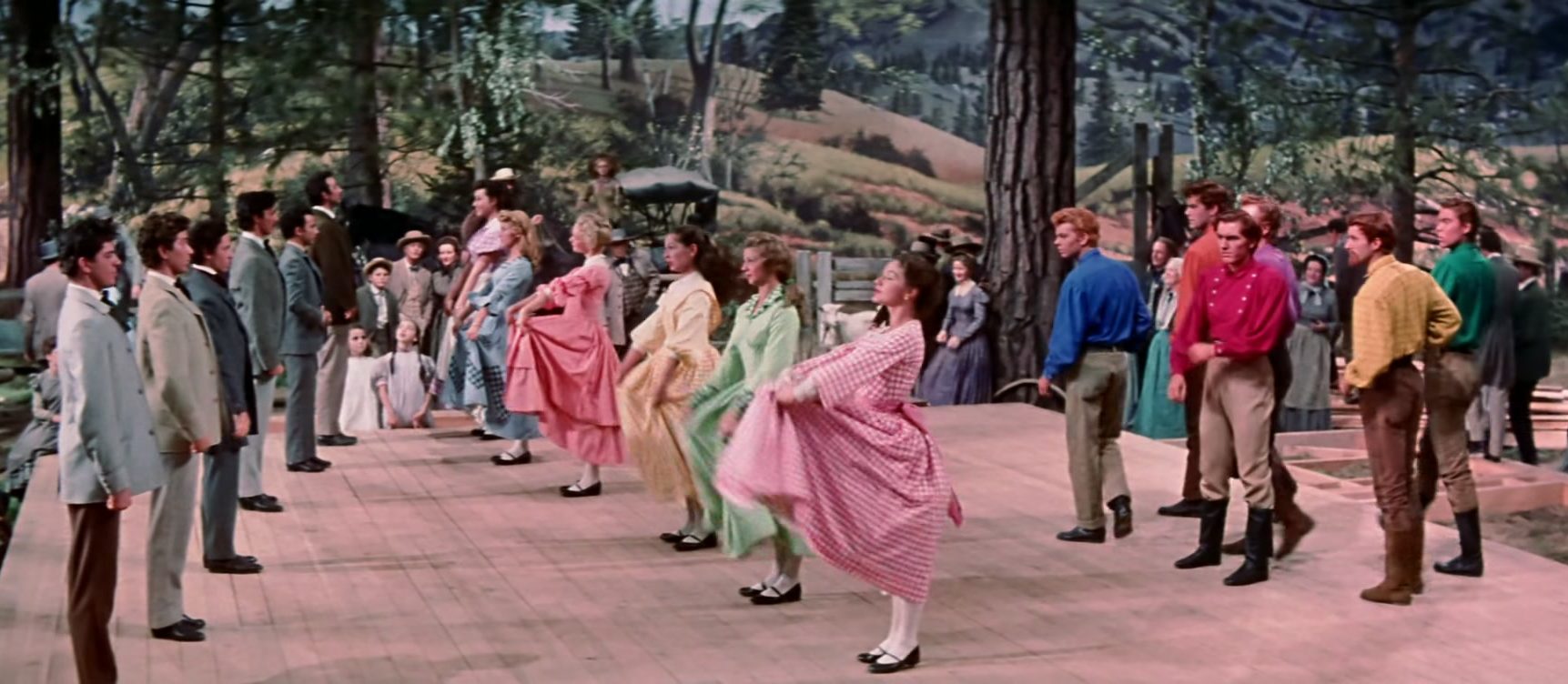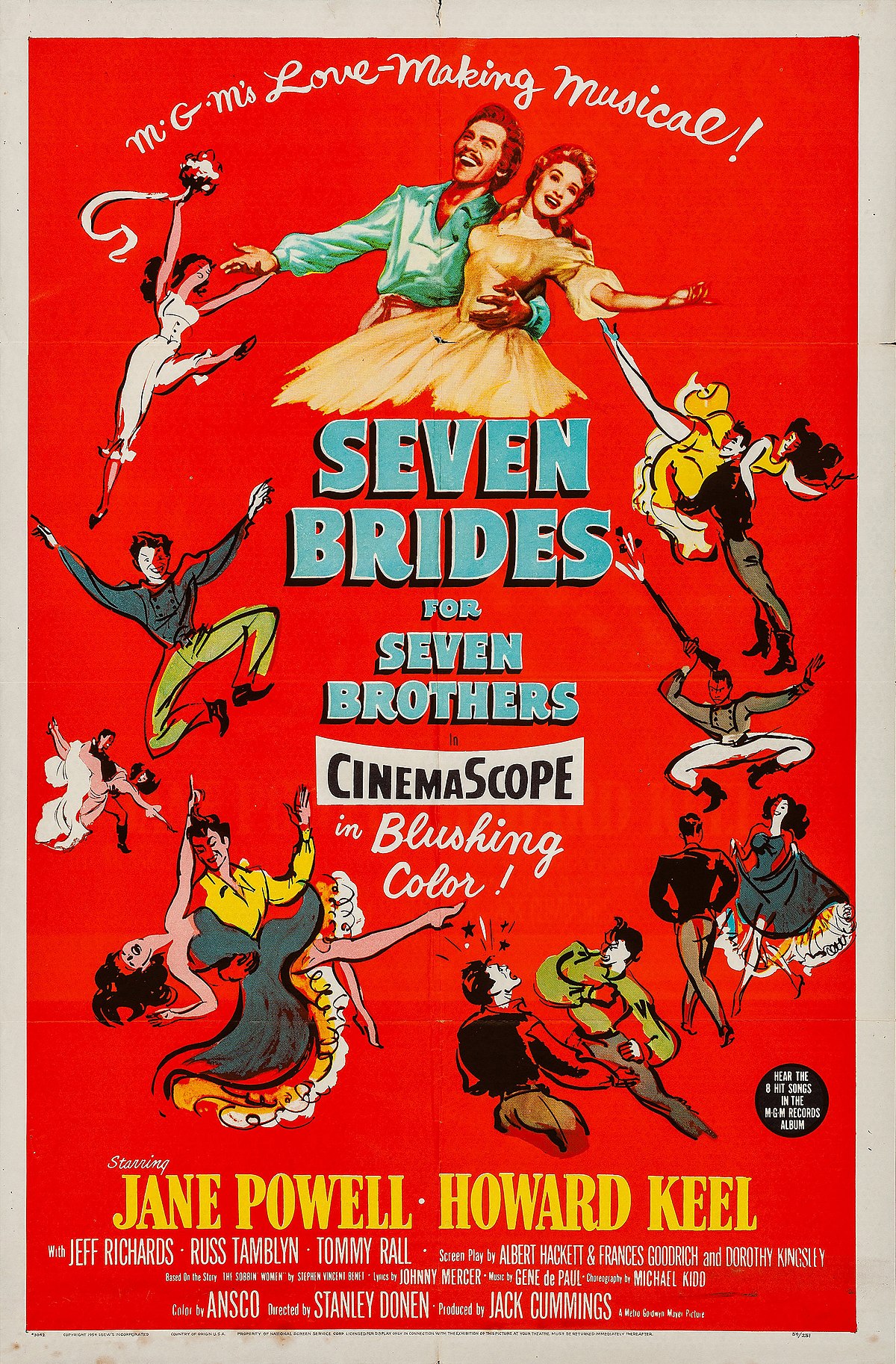

“Can’t make no vows to a herd of cows.”
Seven Brides for Seven Brothers is a paradox—a joyfully performed, exuberantly costumed, impressively choreographed, markedly hummable, backcountry jamboree of a musical, about the abduction of a half dozen young women at the hands of an uncultured family of mountain men.
That the kidnapping is played for laughs has been a hangup for many modern viewers. It’s almost like watching Tom pursue Jerry as the Pontipee brothers lie in wait in the dark of night for the young women they fancy to stick their noses outdoors, at which point they toss blankets over their heads and load them onto the wagon. However, within the text of the film this abhorrent behavior is severely chastised by Milly (Jane Powell), the wife of the eldest brother Adam (Howard Keel), who forces the brothers to live in the barn for the winter as punishment for snatching the girls. Meanwhile Adam, who led the kidnapping effort after being inspired by a Roman legend, treks out to a remote trapping cabin to pout all by his lonesome.
Stuck on the Pontipee farm for the winter due to a snowed-in mountain pass, the women eventually come around to affection for their captors, which may be the real rub: that the punishment for the boys’ poor behavior wasn’t permanent. But no one is holding up the unruly brothers as a moral example, no matter that their misdeeds are presented tongue-in-cheek. Further, though—and maybe I’m reaching a little bit—undergirding this modern reappraisal seems to be a feminist critique that takes issue with the fact that women of that era (the film was released in 1954 and set in 1850) were raised to see value in homemaking in the first place. Indeed, Milly seems eminently capable at cooking, cleaning, washing, mending, and so on, and finds great joy in such a life. It’s only that Adam wants her to perform all of her wifely duties (except copulation) for not only him but all six of his unkempt brothers that leads to the predicament.
Politics aside, Seven Brides for Seven Brothers is a treat. Professional dancers and singers dominate the cast, allowing Stanley Donen to showcase a number of athletic dance numbers with minimal sleight of hand. The highlight of the entire picture is an extended dance/fight sequence that begins with a community barn raising and ends with the Pontipees being ostracized by the townspeople for provoking a brawl. Exhilarating choreography from Michael Kidd integrates the act of constructing the barn into the performance and manages to fit the personalities of the rugged outdoorsmen.
Though much of the film ostensibly takes place outdoors or at the Pontipee cabin up in the mountains, it is clearly set on stages with matte painting backgrounds—a feature that indicated budget constraints at the time but which now offers the charm of a bygone era. (MGM favored the Gene Kelly vehicle Brigadoon and reportedly reallocated some of the budget for Seven Brides to that film.) And of course, the songs penned by Saul Chaplin, Gene de Paul and Johnny Mercer are packed full of memorable melodies and endearingly corny lyrics—I found myself especially unable to get the plaintive ‘Lonesome Polecat’ out of my head. “I’m a mean old hound dog bayin’ at the moon. ‘Cause I ain’t go no lady friend hound dog here to hear my tune.”